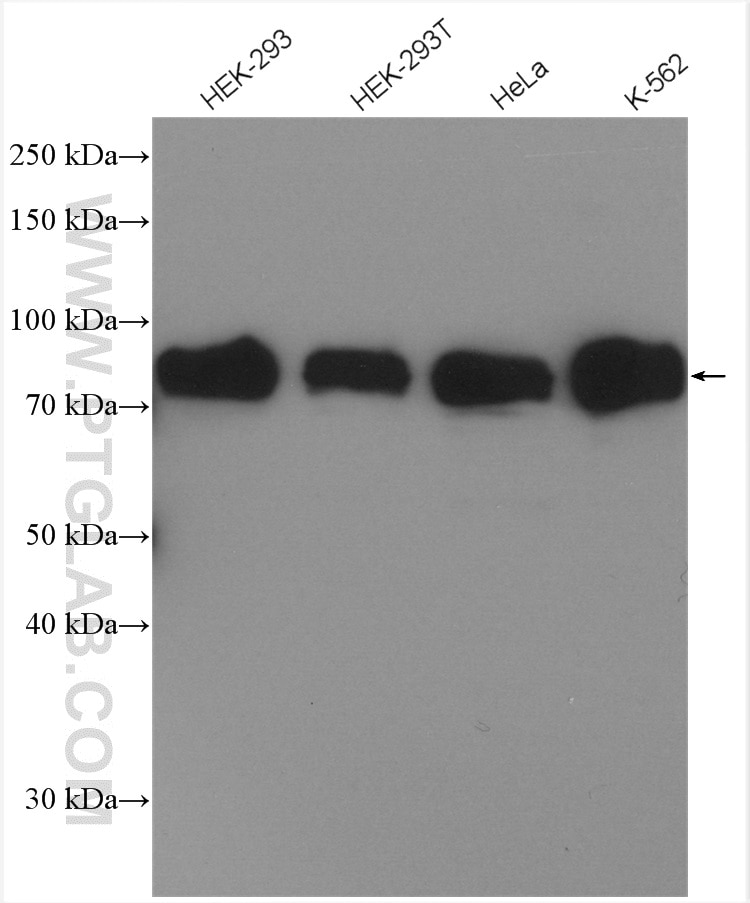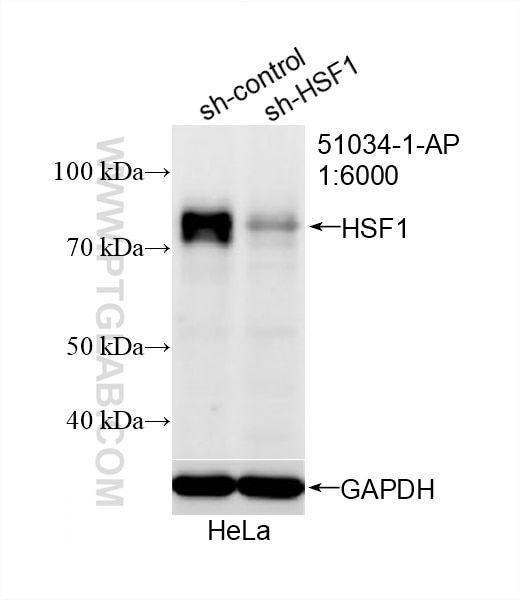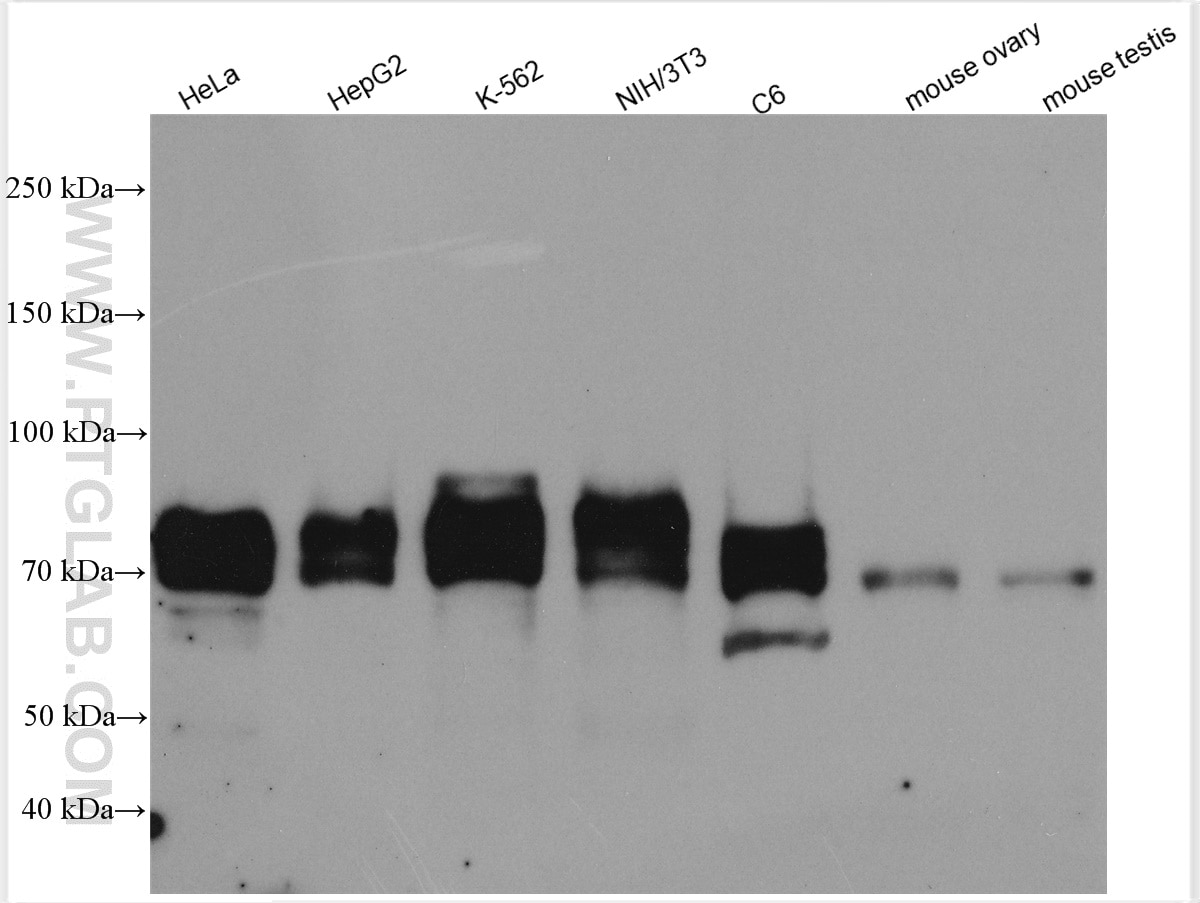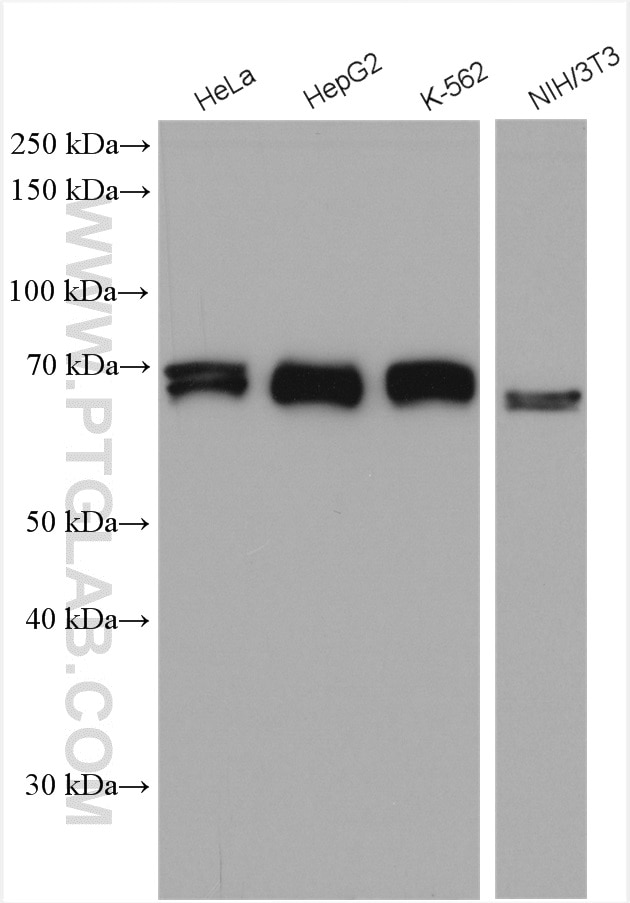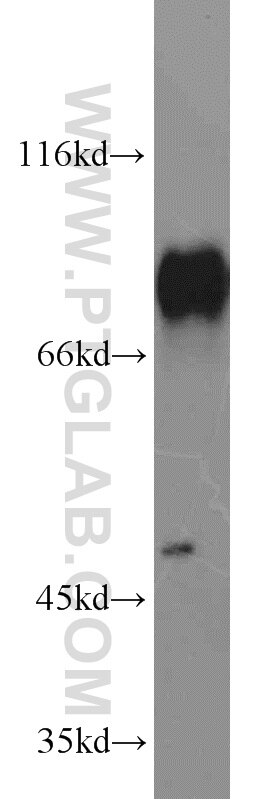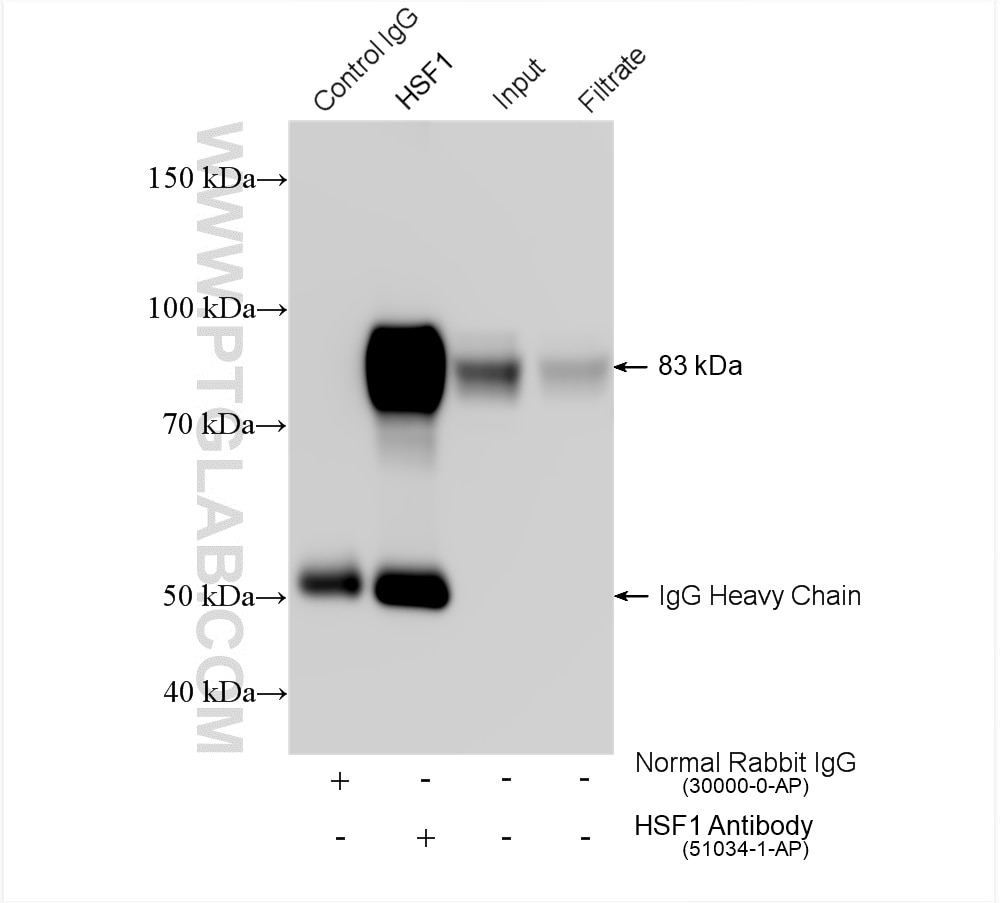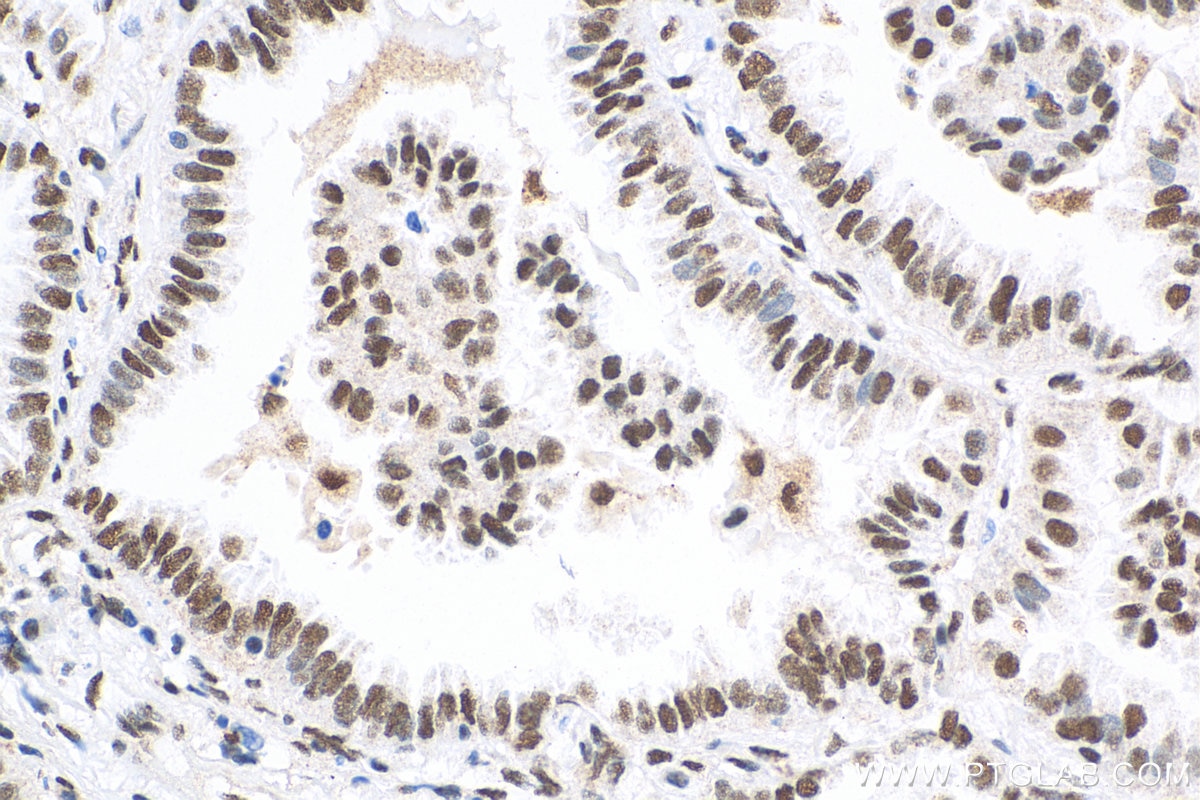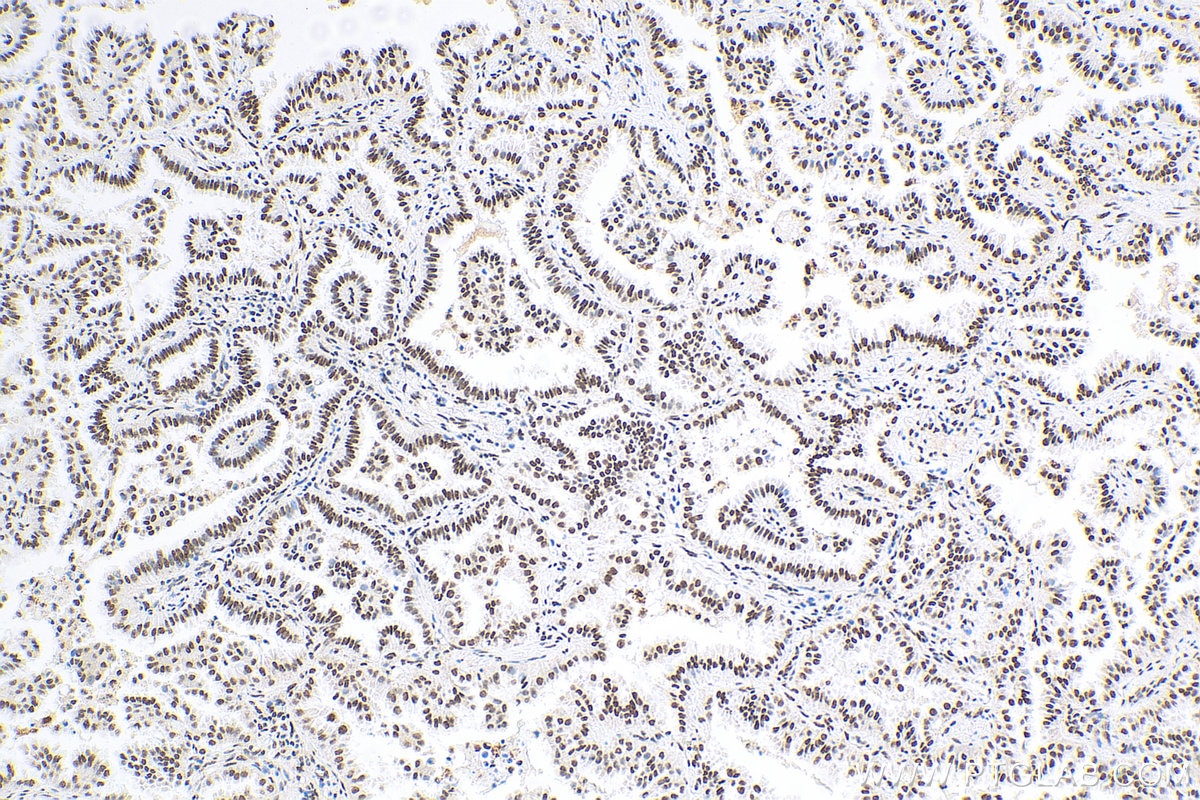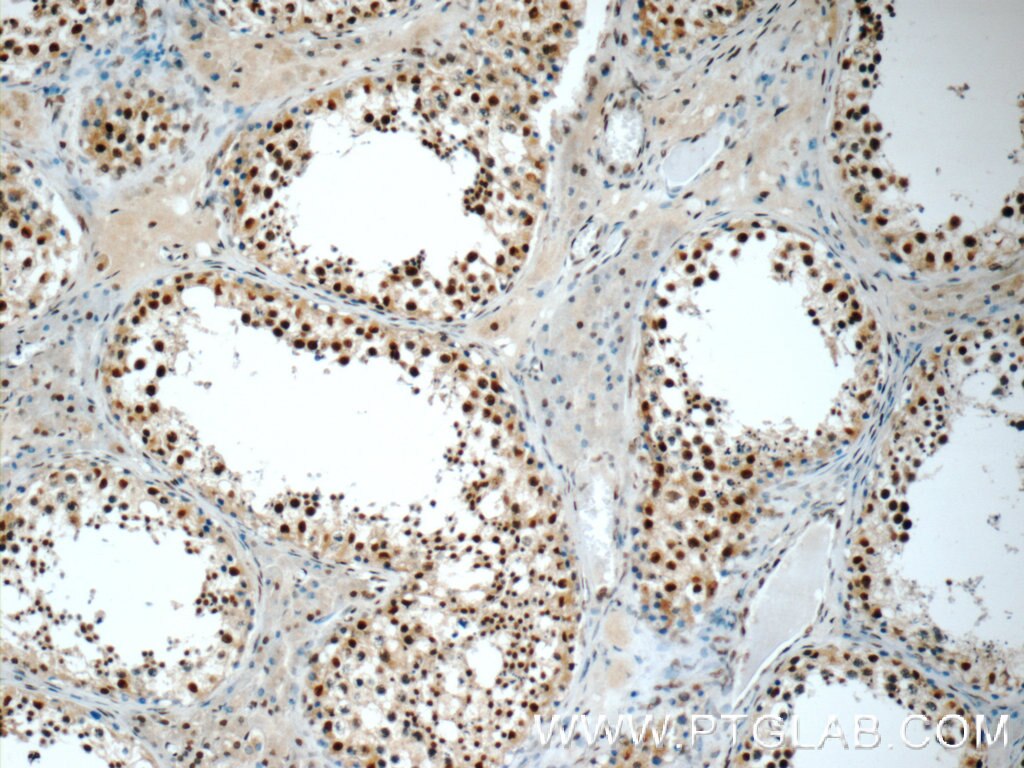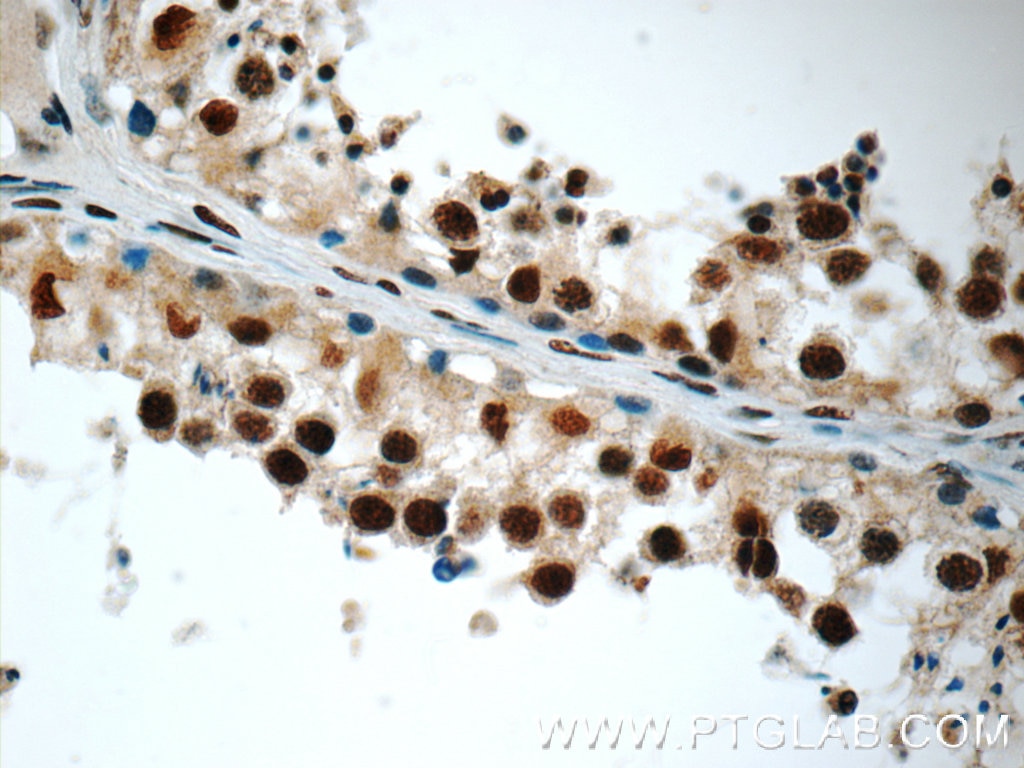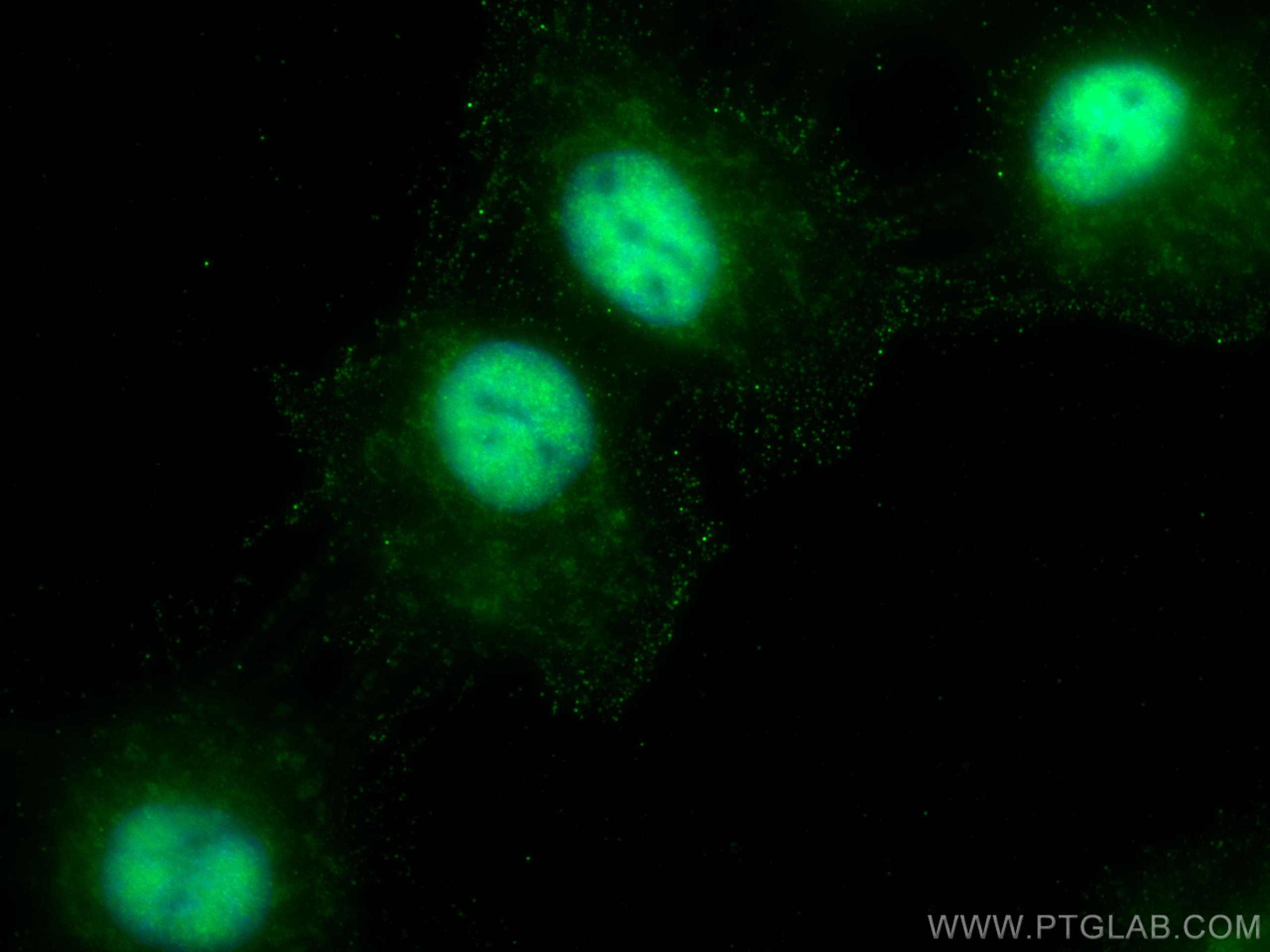- Featured Product
- KD/KO Validated
HSF1 Polyklonaler Antikörper
HSF1 Polyklonal Antikörper für WB, IHC, IF/ICC, IP, ELISA
Wirt / Isotyp
Kaninchen / IgG
Getestete Reaktivität
human, Maus, Ratte und mehr (1)
Anwendung
WB, IHC, IF/ICC, IP, CoIP, ChIP, ELISA
Konjugation
Unkonjugiert
Kat-Nr. : 51034-1-AP
Synonyme
Geprüfte Anwendungen
| Erfolgreiche Detektion in WB | HEK-293-Zellen, A431-Zellen, C6-Zellen, HEK-293T-Zellen, HeLa-Zellen, HepG2-Zellen, K-562-Zellen, Maus-Eierstockgewebe, Maushodengewebe, NIH/3T3-Zellen |
| Erfolgreiche IP | Jurkat-Zellen |
| Erfolgreiche Detektion in IHC | humanes Lungenkarzinomgewebe, humanes Hodengewebe Hinweis: Antigendemaskierung mit TE-Puffer pH 9,0 empfohlen. (*) Wahlweise kann die Antigendemaskierung auch mit Citratpuffer pH 6,0 erfolgen. |
| Erfolgreiche Detektion in IF/ICC | A431-Zellen |
Empfohlene Verdünnung
| Anwendung | Verdünnung |
|---|---|
| Western Blot (WB) | WB : 1:1000-1:4000 |
| Immunpräzipitation (IP) | IP : 0.5-4.0 ug for 1.0-3.0 mg of total protein lysate |
| Immunhistochemie (IHC) | IHC : 1:500-1:2000 |
| Immunfluoreszenz (IF)/ICC | IF/ICC : 1:200-1:800 |
| It is recommended that this reagent should be titrated in each testing system to obtain optimal results. | |
| Sample-dependent, check data in validation data gallery | |
Veröffentlichte Anwendungen
| KD/KO | See 1 publications below |
| WB | See 20 publications below |
| IHC | See 2 publications below |
| IF | See 7 publications below |
| IP | See 2 publications below |
| CoIP | See 1 publications below |
| ChIP | See 1 publications below |
Produktinformation
51034-1-AP bindet in WB, IHC, IF/ICC, IP, CoIP, ChIP, ELISA HSF1 und zeigt Reaktivität mit human, Maus, Ratten
| Getestete Reaktivität | human, Maus, Ratte |
| In Publikationen genannte Reaktivität | human, Maus, Ratte, Rind |
| Wirt / Isotyp | Kaninchen / IgG |
| Klonalität | Polyklonal |
| Typ | Antikörper |
| Immunogen | HSF1 fusion protein Ag0739 |
| Vollständiger Name | heat shock transcription factor 1 |
| Berechnetes Molekulargewicht | 529 aa, 57 kDa |
| Beobachtetes Molekulargewicht | 68-80 kDa |
| GenBank-Zugangsnummer | BC014638 |
| Gene symbol | HSF1 |
| Gene ID (NCBI) | 3297 |
| Konjugation | Unkonjugiert |
| Form | Liquid |
| Reinigungsmethode | Antigen-Affinitätsreinigung |
| Lagerungspuffer | PBS with 0.02% sodium azide and 50% glycerol |
| Lagerungsbedingungen | Bei -20°C lagern. Nach dem Versand ein Jahr lang stabil Aliquotieren ist bei -20oC Lagerung nicht notwendig. 20ul Größen enthalten 0,1% BSA. |
Hintergrundinformationen
HSF1 belongs to heat-shock transcription factors that activate heat-shock response genes under conditions of heat or other stresses. Also, HSF1 has been linked with oogenesis, spermatogenesis, and placental development. It can activate AKT and inactivate JNK and CASP3 to protect cardiomyocytes from death. And it has a role in the regulation of life span and establishes a role for SIRT1 in protein homeostasis and heat-shock response. The calculated molecular weight of HSF1 is 57 kDa, but HSF1 migrates at approximately 80 kDa which likely represents different phosphorylation states (PMID: 18434628).
Protokolle
| PRODUKTSPEZIFISCHE PROTOKOLLE | |
|---|---|
| WB protocol for HSF1 antibody 51034-1-AP | Protokoll herunterladen |
| IHC protocol for HSF1 antibody 51034-1-AP | Protokoll herunterladenl |
| IF protocol for HSF1 antibody 51034-1-AP | Protokoll herunterladen |
| IP protocol for HSF1 antibody 51034-1-AP | Protokoll herunterladen |
| STANDARD-PROTOKOLLE | |
|---|---|
| Klicken Sie hier, um unsere Standardprotokolle anzuzeigen |
Publikationen
| Species | Application | Title |
|---|---|---|
Nat Commun Spliceosome component Usp39 contributes to hepatic lipid homeostasis through the regulation of autophagy | ||
Dev Cell Nuclear import carrier Hikeshi cooperates with HSP70 to promote murine oligodendrocyte differentiation and CNS myelination | ||
Food Funct Protective effects of L-theanine and dihydromyricetin on reproductive function in male mice under heat stress | ||
Int J Pharm Effective myocardial infarction treatment by targeted accumulation of Sulforaphane using porous magnetic silica nanoparticles | ||
Am J Physiol Cell Physiol Cancer associated fibroblasts suppressed ferroptosis in glioblastoma via upregulating lncRNA DLEU1 |
